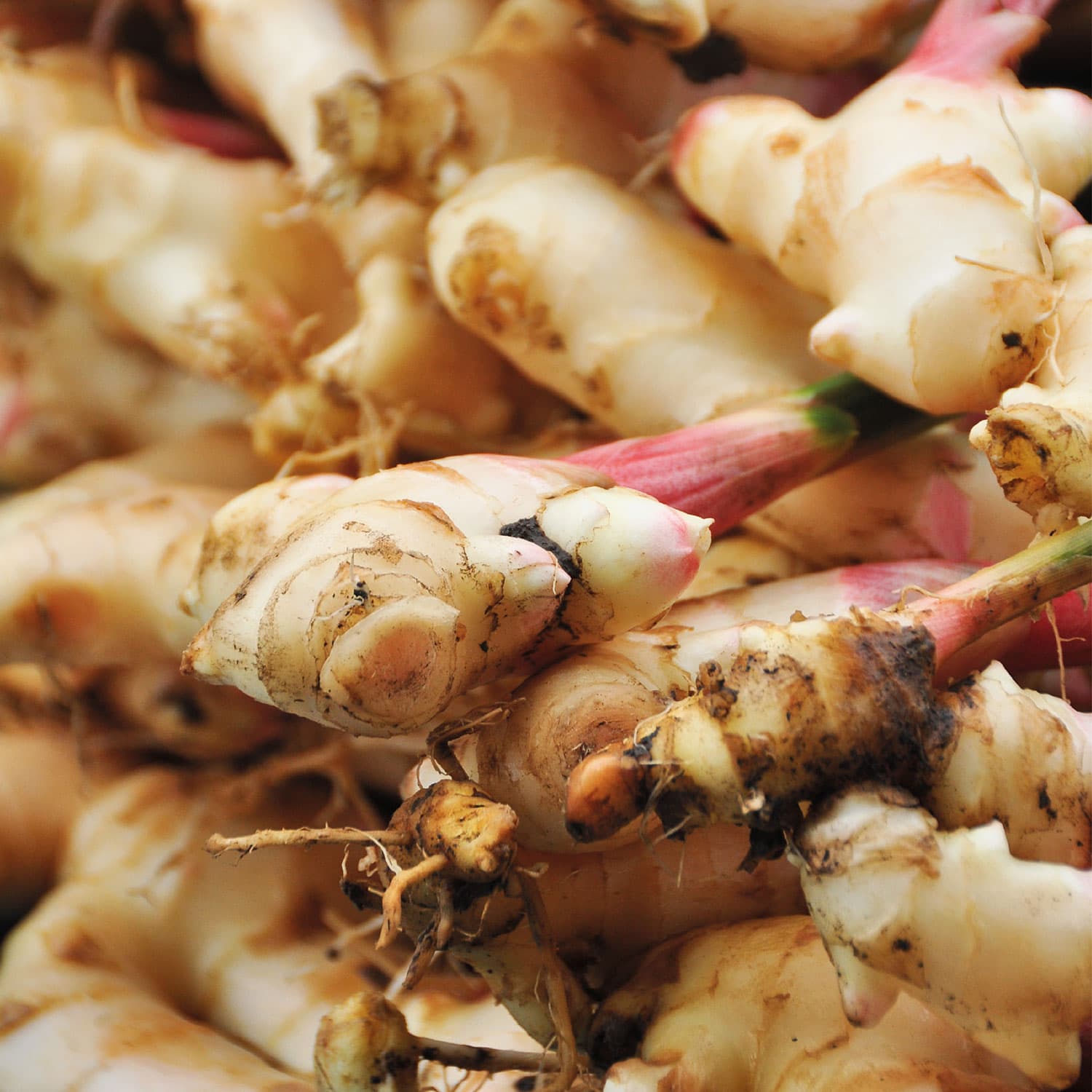“Fusarium has been in the industry pretty much forever and it’s something we’ve had to tackle forever, too,” said Ms Templeton.
Fusarium yellow rot is a fungus, and a major threat to Australian ginger production. Relatively common, and hard to control once planted. It can spread through soil from plant to plant and can stop seed stock – also known as the rhizome – from germinating or stunt its growth. What’s more, the fungus can also live in the soil for years, adversely impacting future crops.
The fine art of planting ginger
Growing up in the ginger business, Ms Templeton said she’s learnt about the industry from the bottom up; from picking and packing ginger, to now working as a Director of Templeton Ginger Proprietary Limited.
“When it comes to fusarium, you can have good years and bad years, but if you’re having a bad year, you could easily lose 30% of your crop when the fusarium rot attacks the ginger,” explained Ms Templeton.
“If the ginger seed isn’t clean when its planted and it’s infected with fusarium, you’re going to grow fusarium. So, we’re consistently trying to eliminate the fusarium disease in our seed preparation,” added Ms Templeton.
The preparation of disease-free seed ginger for planting takes place over three months and is a labour-intensive process. It’s estimated that the production of 400 tonnes of seed, or rhizomes, for planting requires about 20 people full-time for 12 weeks per year. Seed stock can be sourced from a specialised nursey, or from the rhizomes of the previous season’s crop.
“When we’re cutting the seed pieces, we manually inspect each piece of ginger. Through many years of experience, we’ve learnt how to identify at very early stages, the signs of fusarium rot.,” Ms Templeton said.
“Of course, when fusarium has infected the ginger badly it’s very easy to identify, but the key concern is trying to identify it in its very early stages which comes down to the colouring of the ginger.”
What can agriculture learn from marine biology?
To better stay on top of fusarium, Templeton Ginger agreed to be a trial location for a project funded through AgriFutures Australia’s Ginger Program labelled ‘Ginger Ninja: Automating disease detection in seed ginger stock’.
The project piloted the development of an automated vision system for pest and disease management that is capable of robustly identifying signs of fusarium in seed ginger stock – all based on research initially done on the Great Barrier Reef.
Led by Queensland University of Technology Professor of Robotics Matthew Dunbabin, the project drew on successful results from Professor Dunbabin’s work creating robots that could monitor crown-of-thorns starfish that feed on coral.
“Back in 2005 we created vision algorithms that could automatically detect the starfish. But although we had really good algorithms, we could only get about 60 or 70% detection accuracy,” Professor Dunbabin said.
“Fast forward to 2014 and we had a convergence of technology in biology that allowed us to revisit the crown-of-thorns starfish thanks to the emergence of deep learning and artificial intelligence (AI) which allowed us to do real-time image segmentation,” said Professor Dunbabin.
“These new algorithms allowed 99% detection accuracy of starfish at nearly 10 times a second on board the robot. That was the segue into thinking about what other applications could we use this for outside of an underwater situation.”
Translating research from sea to land
Professor Dunbabin said the link between marine and agriculture is not as diverse as people might think.
“What we’re really interested in is taking these deep learning algorithms where we train up these models to detect a certain thing and apply them to different domains,” said Professor Dunbabin.
“We’d already been applying these algorithms to identify weeds and came to learn about the fusarium problem in ginger crops and the work the industry has to do around seed production and selection.
“Talking with the Templeton Ginger team, we started to understand how labour intensive the process is. Essentially as the ginger comes off the production line the staff need to try and determine the presence or absence of disease, and then by hand, cut up the ginger to prepare for it to be replanted as seed.
“For us that was a really exciting problem because we could now take what we know from artificial intelligence and deep learning and explore the prospect of being able to do real time disease detection.”
To start building the algorithms, experts sought ginger from Templeton Ginger to image under controlled lighting and with different types of cameras. The aim being to determine the accuracy of what the trained human eye had assessed as being diseased or not diseased.










